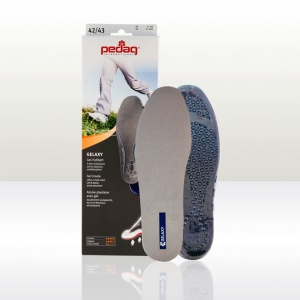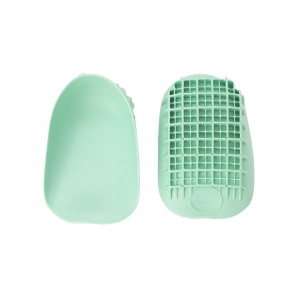What Are Heel Fissures?
Heel Fissures, also known as cracked heels, are the nuisance problem often faced by overworked feet. Leading to heels appearing dried, cracked and flaky, almost everyone can say they have been victim to Heel Fissures at least once in their life.
While generally doing nothing so harmful as damaging the appeal of sandals and sling-backs as you try to hide your heels away, Heel Fissures can sometimes worsen, becoming a more serious issue. Left untreated you can be faced with painful cracked heels that reach deep enough to aggravate healthy tissue beneath. Deep cracks in the heel can bleed when under pressure or even become infected, this is especially dangerous for people with diabetes or compromised immune systems.
Horrid Heels
Anyone can end up with cracked heels, those with a penchant for going barefoot may find that their feet suffer from this condition more often than if they wore shoes.
Living in a dry climate or simply having your feet survive winter, being overweight or often wearing open-backed shoes which allow the fat pad of the heel to expand in a sideways direction not possible in supportive, fully enclosed shoes can all increase your risk of Heel Fissures. An existing skin condition or bout of eczema, compromised sweat glands or simply an unfortunate case of genetics will also make this condition more likely to present.
Fixing Your Fissures
An oil-based moisturiser will work wonders for dry feet, try the traditional dry feet and fissure treatment trick of smothering your feet in cream at night, slipping on a sock and awaking to soft and supple feet the next morning. For extra sole softening, try baby oil or even petroleum jelly. Widely available pumice stones and files can also help lessen the hard skin on your heels, just bathe your feet in warm water and gently rub the affected area with a pumice stone, sometimes treatment is as simple as giving your feet a treat.
In serious cases of Heel Fissures, you’ll need to attack them head on, and by ‘you’ we mean a qualified specialist. Tempting as it has been for many a bathroom surgeon before now to hack away at the dead skin with any blade at hand, self-treatment of this condition is rarely carried out safely or completed successfully. Cutting too deep can lead to bleeding, a greatly heightened risk of infection and damage to the remaining healthy skin. A qualified beautician or foot care professional will be able to safely, painlessly remove dead skin from the heel, revealing the healthy skin beneath and allowing you to smother the area with lotions and potions to bring your heels back to their best.
Help for Hurting Heels
Foot creams and professional removal are the best way of treating Heel Fissures, but they are not an instant cure, or necessarily the best preventative if your feet endure a lot from day to day. An Insole or Heel Cup can make your shoe a much more welcoming environment for hard-working feet, with a Heel Protector being a perfect way of keeping extreme fissures covered and safe from further friction or irritation.
The best insoles for Heel Fissures should be able to:
- Provide shock-absorption for the heel area
- Cushion hurting heels
- Support the heel pad to prevent sideways expansion and the appearance of new ‘cracks’
Please visit the Shoe Insoles website for a full range of Insoles for Heel Fissures.
Pedag Gelaxy Gel Insoles
- Gel insoles suitable for numerous conditions
- Absorb shock to prevent joint pain
- Available in 6 sizes with "cut down" design
Superfeet Black All-Purpose Low Arch Support Insoles
- Low-profile black insoles for pain relief and underfoot comfort
- Patented heel cup stabilises the foot, for minimal strain on the rest of your joints
- Moisture-wicking top cover helps to reduce bad odours, for fresher feet
- Recommended for use with slim-fitting footwear
- Covered by the Superfeet 60-Day Money-Back Comfort Guarantee
Tuli's Heavy Duty Heel Cups
- Extra-thick heel cups for maximum support
- Ideal for plantar fasciitis
- Shock-absorbing properties protect feet
- Flexible waffle-like design improves comfort






.jpg)
.jpg)
.jpg)
.jpg)

.jpg)
.jpg)
.jpg)